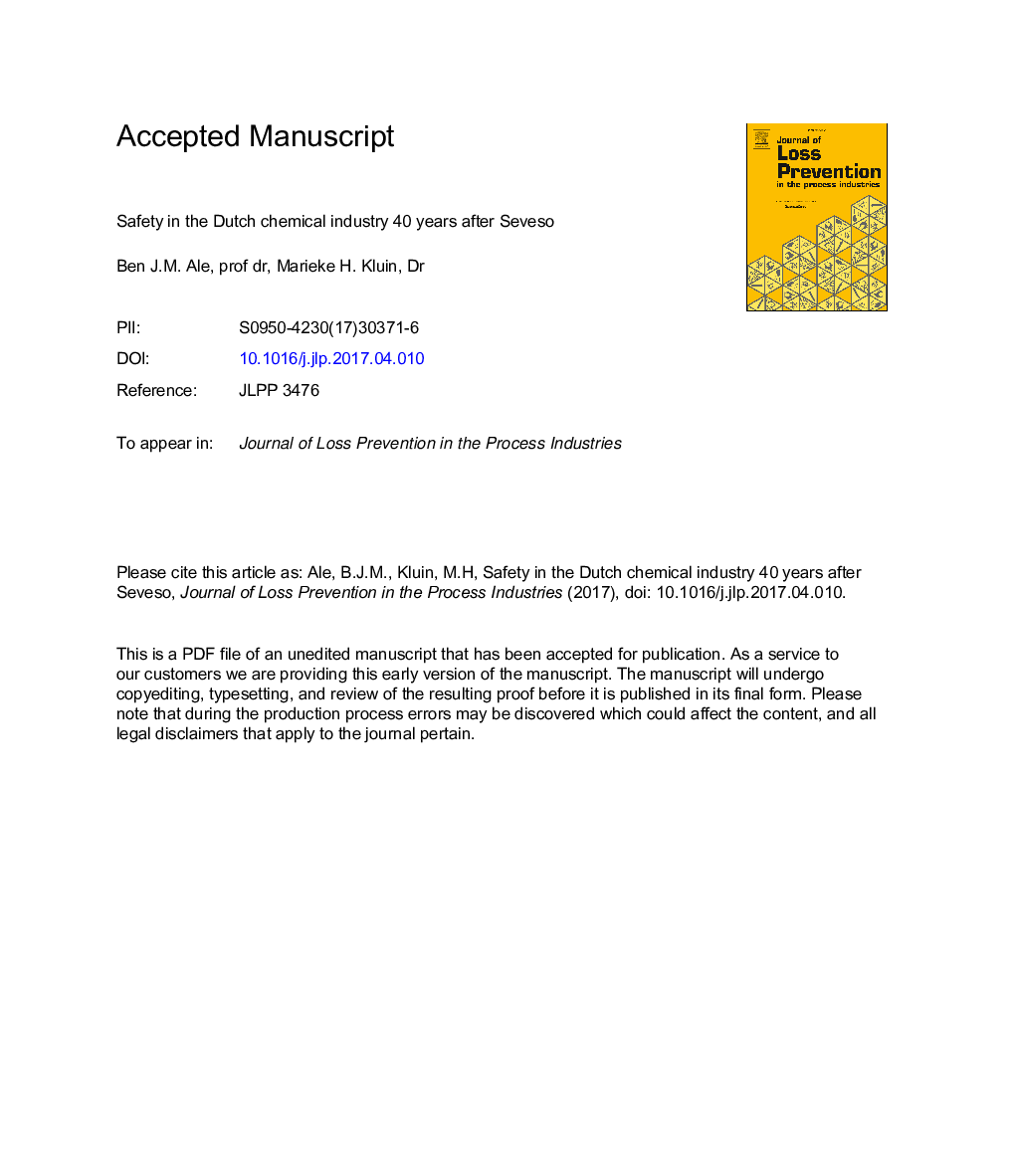| Article ID | Journal | Published Year | Pages | File Type |
|---|---|---|---|---|
| 4980226 | Journal of Loss Prevention in the Process Industries | 2017 | 20 Pages |
Abstract
After several chemical disasters had taken place in the midseventies of the last century, the Member States of the European Union started negotiations on a regulation to improve the safety of so-called major hazard installations in 1979. Three years later the Seveso directive I was finally adopted. Since then there is continuous discussion whether governmental regulation and oversight is really necessary or that chemical companies can take their own responsibility to guarantee safety, health, and environment. A second, related and more recent discussion regards the causes of accidents. Accidents are no longer the result of clearly visible failures. The signals of imminent accidents are said to be weak, which makes finding indicators for imminent failures difficult to observe, which in turn decreases the usefulness of necessarily superficial oversight. In this paper we describe a number of recent incidents in the Netherlands and the subsequent investigations. These and other incidents led to a more in depth study into the behaviour of chemical corporations. This study is summarized and the results of these investigations is confronted. The conclusion is somewhat saddening. Only a minority of companies make safety of their workers and their environment really a priority. Hence the authorities need to continue to insist that multiple layers of defence be designed and installed and not leave inspection and oversight to the companies or the industry itself.
Keywords
Related Topics
Physical Sciences and Engineering
Chemical Engineering
Chemical Health and Safety
Authors
B.J.M. Ale, M.H.A. Kluin, I.M. Koopmans,
